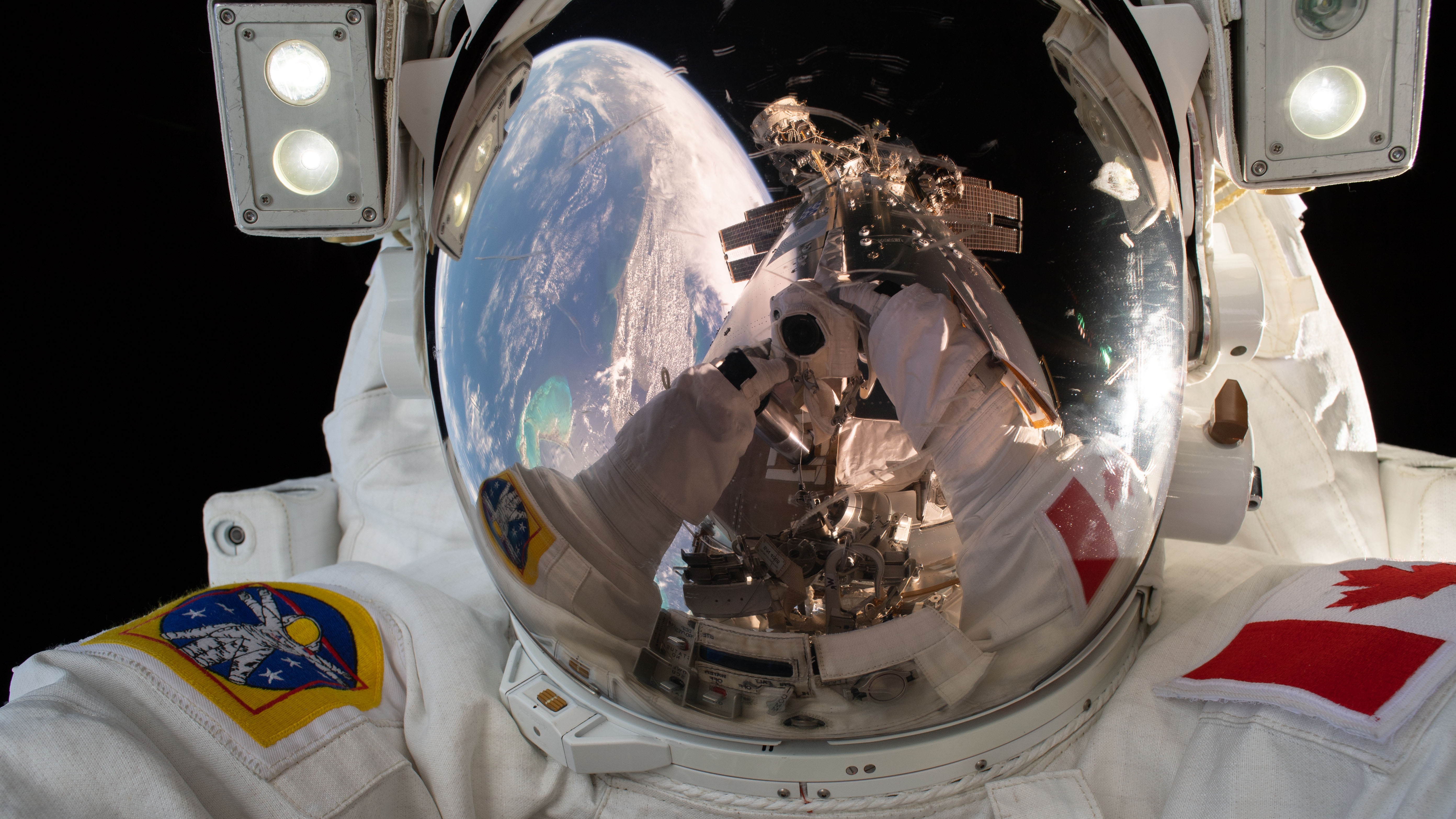Canadian Space Agency will announce new astronaut assignments today (Nov. 22). Here's how to watch it live.
Who is flying to space next for Canada? We'll know soon.

Canada is announcing new "astronaut assignments" today (Nov. 22), and you can watch the event live.
The Canadian Space Agency (CSA) will host a livestream at 9:30 a.m. EST (1430 GMT) on its YouTube channel and on Facebook, agency officials posted on X (formerly Twitter). The event will be at CSA headquarters near Montreal, Quebec. We will simulcast the announcement here on Space.com when the livestream is available.
As with all crew assignments, we won't know who has been assigned to what kind of a mission until the time of the event. There are three active CSA astronauts available: Medical doctor David-Saint Jacques (who flew to the International Space Station for 204 days in 2018-19), fire scientist Jenni Sidey-Gibbons (eligible for her first spaceflight) and Joshua Kutryk (a military pilot eligible for his first spaceflight).
The fourth and only other active CSA astronaut will be busy with another, already announced mission for a long while: In April 2023, Jeremy Hansen was assigned to NASA's Artemis 2 mission to fly around the moon no earlier than late 2024. The new announcement this month will mark a rare second time in a single calendar year that the CSA unveils new astronaut assignments.
Related: Artemis 2 astronaut Jeremy Hansen says a Canadian will walk on the moon one day
Canada has been contributing robotics to NASA human space programs since the late 1970s, starting with Canadarm on the space shuttle, continuing with newer robotics on the ISS and then pledging a next generation of robot to fly on the NASA Gateway space station near the moon when it is completed sometime late this decade.
Typically, Canada then receives an astronaut seat (along with a share of science) for its robotics work. The current ISS agreement gives Canada a 2.3% share on the orbiting complex, in exchange for NASA's use of the Canadarm2 robotic arm and the Dextre robotic helper. The agreement equates to a long-duration spaceflight for CSA roughly every six years under current flight rates; the last such excursion was Saint-Jacques' in 2018-19.
Get the Space.com Newsletter
Breaking space news, the latest updates on rocket launches, skywatching events and more!
But newer options have popped up for spaceflight recently. Canada's pledge of Canadarm3 for Gateway in March 2019 gives it a slice of the NASA-led Artemis moon missions as well. (Artemis 2 is the first such assignment with the Canadarm3 scheme, but more are coming eventually.) Additionally, Canada may ask for a short-term mission on ISS based on a memorandum of understanding with Houston-based Axiom Space forged in September 2022. (Axiom runs roughly two-week missions to the ISS using SpaceX Crew Dragon spacecraft, commanded by a former NASA astronaut.)
There has been a slew of space funding for CSA in recent years, including a lunar utility vehicle to support Artemis astronauts, a funded commitment to work on the ISS until 2030, and a mini-lunar rover targeted for landing in 2026. Additionally, earlier in 2023 the Canadian government pledged to streamline launching regulations to support the nascent industry; Maritime Launch Services is now expanding a launchpad for eventual orbital flights in coastal Nova Scotia, facing the Atlantic Ocean.
But given Canada has a small tax base for space funding, meaning government-funded opportunities to fly to space are few, it's rare for multiple CSA astronauts to receive announcements (or spaceflights) around the same timeframe. The only time two CSA astronauts worked together in space was for a few days in 2009, when astronaut Julie Payette (aboard STS-127) visited Expedition 20/21 astronaut Bob Thirsk on the ISS with her space shuttle crew.
For a time in the 1990s, additional government space funding allowed CSA astronauts to fly frequently on the space shuttle, when that spacecraft used to bring seven or so astronauts to space at once every few months. Notably, Marc Garneau and Thirsk flew only one month apart in 1996 during STS-77 in May and STS-78 in June, respectively. And Canadian astronauts flew at least once per year between 1995 and 2001 on space shuttle flights.
While opportunities for CSA astronaut flights slowed after 2001 as the space shuttle moved towards retirement, short-duration flights took place in 2006, 2007 and 2009. The CSA (along with other space station partners) then shifted to long-duration excursions for the ISS in 2009, 2012-13 and 2018-19, prior to recent changes in world spaceflight that now allow for government-sponsored Axiom Space or moon flights.
Canadians have flown to space by other means, to be sure, such as by joining the NASA astronaut corps or by funding their own flights to space. Recent examples include NASA's Drew Feustel (who commanded the ISS in 2018) and entrepreneur Mark Pathy (who paid for his seat aboard 2021's Ax-1 ISS mission). Canadian actor and "Star Trek" captain William Shatner also visited space for a few minutes aboard a suborbital Blue Origin flight in October 2021.
Join our Space Forums to keep talking space on the latest missions, night sky and more! And if you have a news tip, correction or comment, let us know at: community@space.com.

Elizabeth Howell (she/her), Ph.D., was a staff writer in the spaceflight channel between 2022 and 2024 specializing in Canadian space news. She was contributing writer for Space.com for 10 years from 2012 to 2024. Elizabeth's reporting includes multiple exclusives with the White House, leading world coverage about a lost-and-found space tomato on the International Space Station, witnessing five human spaceflight launches on two continents, flying parabolic, working inside a spacesuit, and participating in a simulated Mars mission. Her latest book, "Why Am I Taller?" (ECW Press, 2022) is co-written with astronaut Dave Williams.









